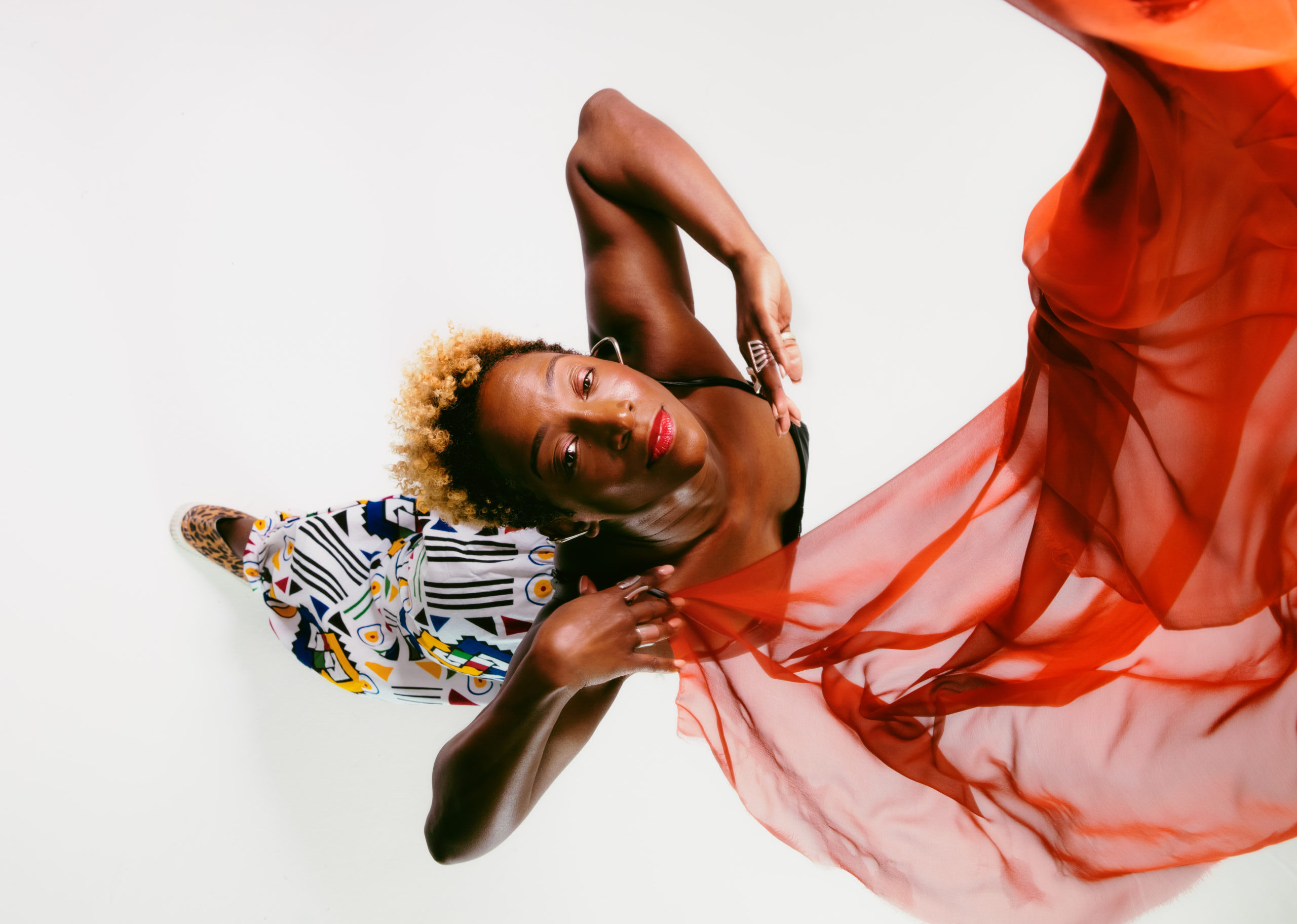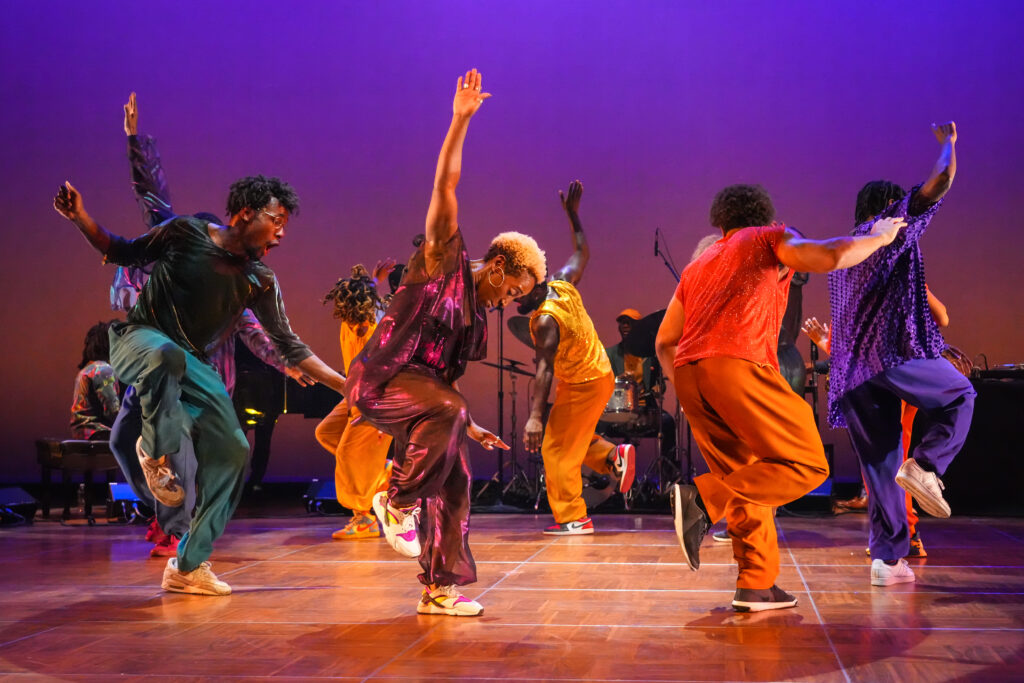
When LaTasha Barnes hits the dance floor, it’s impossible to look away. Her quick, rhythmic footwork finds unexpected patterns to punctuate the music, while her torso, arms and hips follow the lead of her legs with swagger and charisma. Though she didn’t come to the professional world of dance until she was 27 years old, what she lacked in early opportunity she more than made up for in star power and success.

Barnes was raised in Richmond, Virginia, and says the majority of her dance talent can be attributed to her family. “My uncles were performers—they did talent shows and backup dancing for music artists who came through town,” Barnes says. “I was always watching them rehearse, and trying to pick up their moves so I could battle my cousin.” She gleaned inspiration from her parents’ participation in their social club’s dance contests, and her great-grandmother gave her her very first partner dance lesson. “She asked me to hold on to her and run, jump and squat,” she says. “Looking back, it was Lindy hop.” Then, her parents put her into formal ballet lessons, where she thrived. “I progressed very quickly, but when it was time to move on to pointe at 8 years old, my dance teacher had a frank conversation with my parents about the state of the dance world in 1988. Though I was talented, I would not be sought after because I was Black and short.” So, Barnes took a break from formal dance training at 9 years old and pursued other interests.
After graduating high school, Barnes joined the military, where she maintained her connection to the art through social dancing at the NCO Club (a club for noncommissioned officers). There, people from a variety of backgrounds and cultures would come together and share their dance styles with one another. From salsa to line dancing and various street-dance forms, Barnes experienced it all. “Dance allowed me to connect with others in my community,” she says. “It refused to leave me.”
Then in 2004, Barnes was struck by a car as a pedestrian and broke her back, hip and left wrist. She was still an active duty military member at the time, and her physical therapist encouraged her to try dance therapy as a course of recovery. So, she went to a hip-hop class, where she started engaging with the house-dance community in DC. “I felt so much joy, exuberance and purpose,” Barnes says. “I was coming back to dance at 27 and was certain I would only be a benefactor of the art. Instead, I started doing competitions, and three years later I won Juste Debout,” the biggest competition in the world for dance styles like hip hop, popping, locking and house. Since then, Barnes has gone on to have a thriving career. She was a 2021 Bessie Outstanding Performer award winner and has collaborated with Dorrance Dance, Ephrat Asherie Dance, Timbre Arts Group and others.

Here, she shares the advice that has made all the difference in her career, the biggest turning point in her training and more.
The life advice that’s made all the difference in her career “Multiple sources in my life have asked me my ‘Why?’ Why am I doing this? What is my purpose in dancing? Is this an opportunity I have to take advantage of because I’m scared nothing else will come along? If so, I should check that. My parents, Thomas Barnes and Vernell Harris, and my great-grandmother Elizabeth Harris, always asked me if my pursuits aligned with what I ultimately wanted. If not, they asked me if what I wanted has changed, and if I’ve acknowledged that. My mentor, Junious Brickhouse, would ask everyone in his class why we were there that day. He taught me to be introspective, and to make sure everything I did aligned with my greater purpose.”
Her “why” “My perpetual why is to be in service to my community and culture in whatever ways and spaces I am called.”
The biggest turning point in her training “When I was 10 or 11, I was at a cookout with my family. The DJ was playing all the hits, and I don’t know what came over me, but I didn’t stop dancing for six hours straight. It just so happened that someone at the party was connected to a record label, and she was impressed by me. That led me to audition for, and be signed to, a talent agency. I always thought opportunities like that only came from formal training spaces. Instead, it came when I was just dancing and having fun. I’ve thought back on that moment when I hear people tell me the stakes of a competition or performance are high. I don’t really care, because I’ve always done this because I love it. That is what has brought me opportunities.
The moment she realized her potential “While at the U.S. qualifier for Juste Debout, my partner and I were smoking people in [battle] circles all day. When we saw who we would battle next, we were confident we could beat them and asked our teacher who was on the schedule after them. They said, ‘This is it, you win this, and you win the U.S. title.’ We were so in our groove together, we didn’t even realize how far we’d come. And then we won.”
Her most influential teacher: “My great-grandmother Elizabeth Harris was my most influential teacher—mainly because I spent the most time with her. Being under her guidance has shaped everything in my life. In addition to that, I gleaned a lot from my time working with Miss Norma Miller,” the American Lindy hop dancer known as the “Queen of Swing.”
Her advice for aspiring dancers “Establish your community as early as possible. Find people who are on the same path as you, who need similar spaces of support as you—people you can show up for and support without any expectation of reciprocation. Develop your family.”





